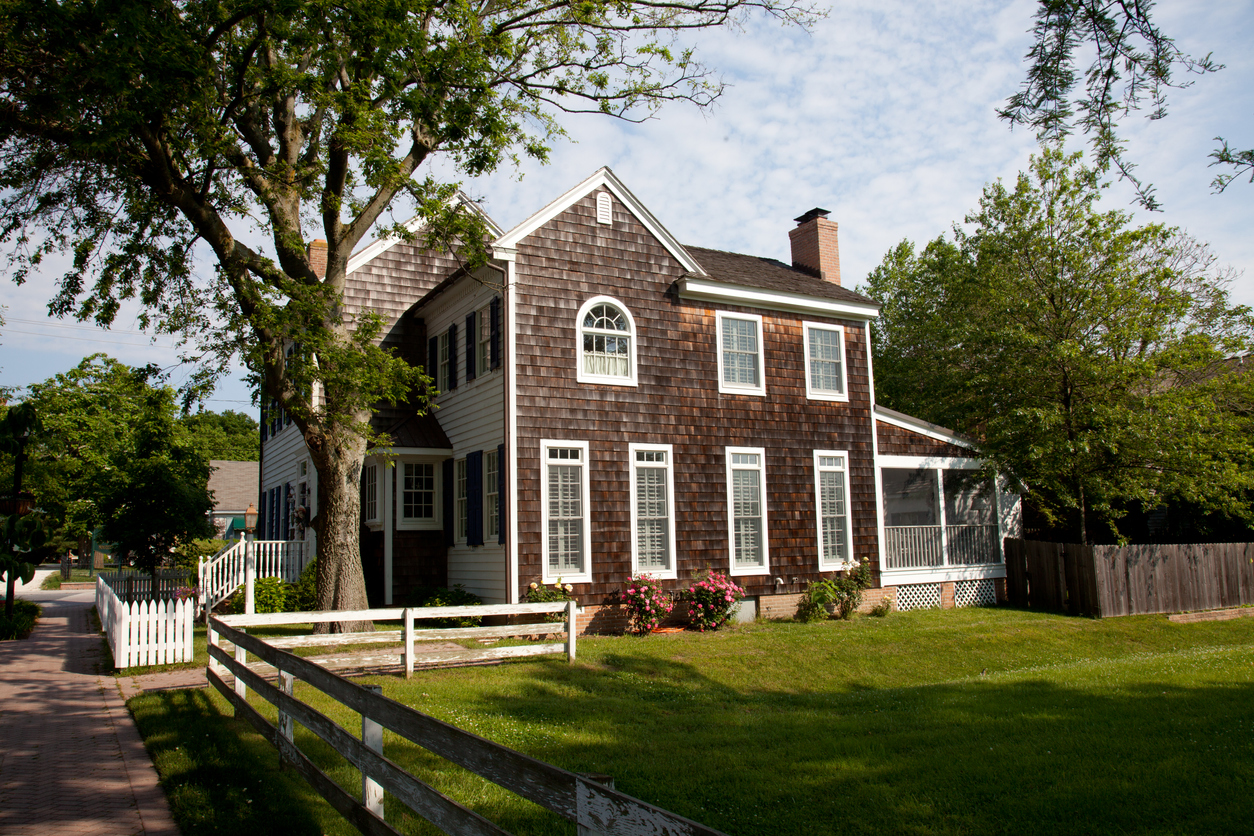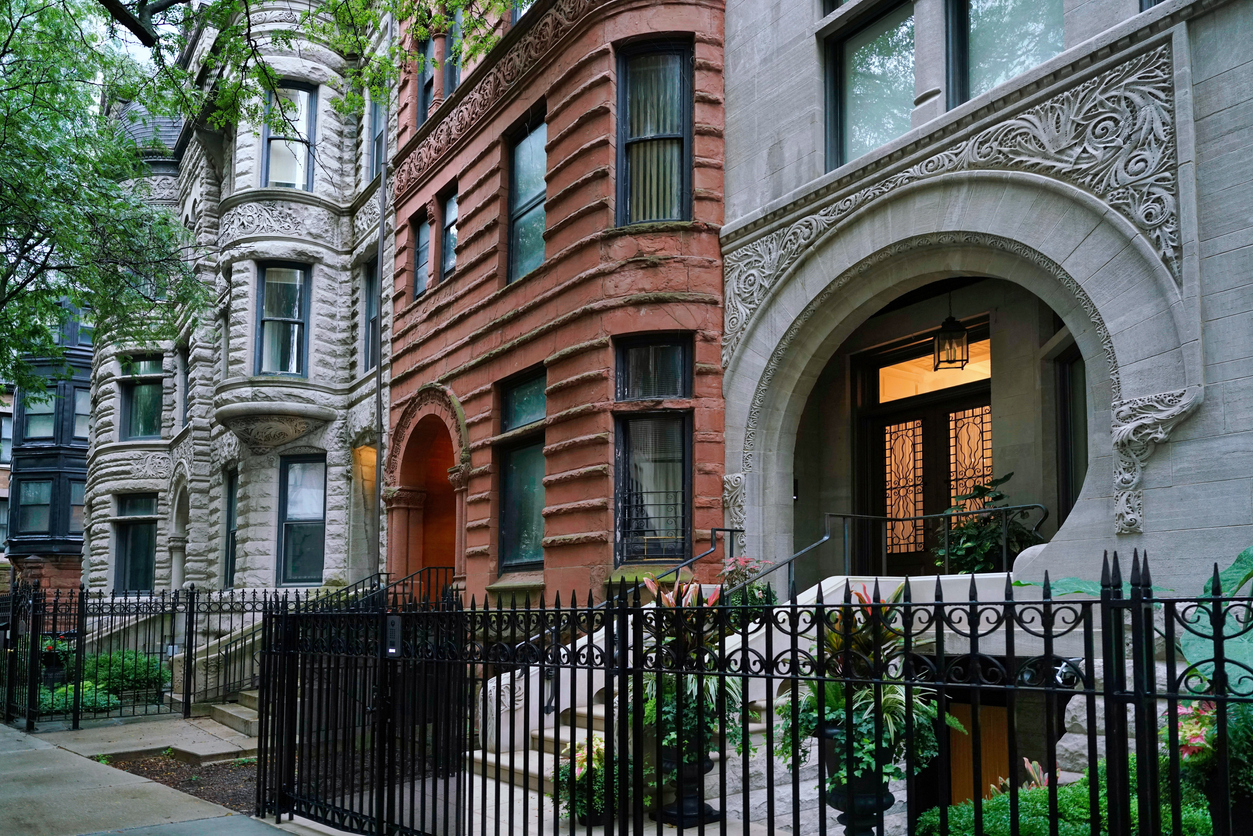We may earn revenue from the products available on this page and participate in affiliate programs. Learn More ›
If the walls in your old home could talk, they would have stories to tell. As generations have come and gone, your old house has stood sentinel—a living record of architectural history and a testament to the quality construction and craftsmanship of times past.
While owning and maintaining an old home has its unique challenges, it also offers many rewards. Preservationists, as stewards of architectural heritage, work to build appreciation for historic structures and to preserve them for future generations. In this article, we’ll explore 10 things preservationists wish you knew about your old house.
1. Your home might be historic.

Not all old homes are historic homes—at least, in the legal sense. For a house to meet the definition of a historic or heritage home requires meeting a few standards. According to the National Register of Historic Places, a home at least 50 years old may be considered historic if:
- It looks much the way it did in the past
- The property embodies the characteristics of the period in which it was built
- Its construction represents the work of a master or important architect
- It is associated with a significant event in history
- The home is connected with an important person in history
- It has the potential to yield important information about the past
Research the history of your old home to see if it may be eligible for historic designation.
RELATED: The 13 Telltale Signs of a Well-Preserved Old Home
2. Consider historic designation.

If you determine that your house is historically significant, you might want to consider seeking official historic designation. Historic designation can be registered through the National Register, your State Historic Preservation Office, or your local municipal government. Designation can bring a number of benefits, including access to tax incentives and grants that can go toward preservation efforts. Designation can also protect the property from future demolition or zoning changes.
Registering a home as a historic structure federally does not affect what the homeowner can do with the property, nor does it come with any obligation to open the home to the public.
RELATED: How to Get Your OId House on the National Register of Historic Places
3. Understand the value of historic homes.

Historic designation isn’t just about pride of homeownership or enthusiasm for history, nor does a home have to be registered to benefit its neighborhood and community. Old houses that are maintained and preserved contribute to the charm and character of neighborhoods, helping to make them desirable places to live. Historic structures help to preserve the unique heritage of communities and can increase property values and tourism.
According to the National Park Service, neighborhoods designated as historic districts enhance business recruitment potential; protect the investments of property owners; and foster educational, social, and psychological benefits.
RELATED: 9 Resources for Finding Amazing Old Houses for Sale
4. Choose the right preservation approach.

Old homes are tough, but they also can be fragile. They require a preservation and maintenance approach that respects their history, intrinsic value, and unique features. Four common methods for doing so are preservation, rehabilitation, restoration, and reconstruction. Understand the difference between each so that you can make the right choice for your old home:
- Preservation keeps the historic home as close to its original condition as possible, upholding its original features and its original use. Any repair measures are only those necessary to keep the building functional and safe.
- Rehabilitation refers to adapting a historic structure for different use while keeping its character and historical features intact. Rehabilitation may include additions or alterations that do not compromise the building’s historic integrity.
- Restoration seeks to return a building to its original features, form, or character. Restoration may include removing modern features or alterations that have been added and replacing these with historically appropriate materials.
- Reconstruction happens when a historic property has been severely damaged or destroyed. Reconstruction recreates the damaged portions of the property based on its original design, using historically appropriate materials.
5. Decorate your home with its history in mind.

Celebrate your home’s heritage by choosing a decorating scheme that pays tribute to its history. Even if your personal taste favors a modern motif, there are ways to decorate an old home to preserve its history while making it your own.
- Try to highlight your home’s defining features rather than hiding them.
- Look at interior pictures of styled homes that were built in the same era and take note of ideas you like.
- Consider using paint or furnishings in colors that were popular in your home’s era.
- Balance modern and traditional style choices of furniture, wall and floor coverings, and window treatments. For example, if you’re not a fan of era-appropriate furniture for your Victorian home, balance your modern furniture choices with Victorian-style wallpaper or window treatments.
- Use historically appropriate accent pieces to make an old home’s contemporary interior sing, such as antique artwork or light fixtures.
- Consult an interior designer with expertise in historic home furnishing and decor.
6. Treasure the superior materials of old homes.

One of the major perks of old homes is their strong bones, built with materials superior to many of those used in construction today. Most prewar homes were built with strong, natural materials such as stone or old-growth timber cut from the heart of the tree, where the wood is hardest. This means that old homes are generally much more durable and resilient over time than their modern counterparts. According to research conducted by Building Resilient Solutions, there is evidence that the types of wood and plaster traditionally used in historic homes are rot-resistant and more resistant to flood damage.
RELATED: The Most Magical Features of Old Houses
7. Maintenance is key.

Regular maintenance is essential for any home, but especially for old homes. While prewar homes often were built with superior materials, regularly inspecting and performing preventive maintenance will help you stay on top of repairs and prevent small fixes from turning into major repairs. You might find it helpful to create an inspection checklist based on the features of the home. Use this list to conduct yearly and biannual inspections so you can spot any damage and fix it as soon as possible.
RELATED: Best Places in the U.S. to Find Historic Homes for Sale
8. Document everything before making changes.

Once you alter the physical aspects of a historic home, there’s no going back. While preservationists encourage homeowners to retrofit rather than replace building components, sometimes you may have no choice but to make major changes to an old home. But before you swing that sledgehammer or wrecking ball, be sure to document the original state thoroughly.
The National Trust for Historic Preservation encourages property owners to take photographs, notes, and measurements of the original structure and features of historic properties before altering them. This preserves the building’s heritage and legacy, plus it creates a record that will be invaluable if the property is restored or rebuilt in the future.
RELATED: 15 Old House Features We Were Wrong to Abandon
9. Look for contractors with historic home expertise.

Repairing and restoring old homes while preserving their historic features is a specialized skill set. Choosing the right architect or contractor to help with renovations and repairs is crucial to upholding the historical integrity of your home. Look for companies and contractors with specific experience in historical preservation.
Network with other owners of historic homes who are happy with the work done on their properties. Consider contacting the local chapter of the American Institute of Architects or a preservationist organization; they might be able to recommend firms who specialize in historic homes.
RELATED: 19 Instagram Accounts to Follow if You Love Old Homes
10. Connect with preservationist experts.

Preservationist organizations can be a wealth of information and support for owners of historic homes. Check out these organizations at the national and state levels:
- The National Trust for Historic Preservation is a nonprofit organization with a national focus. Their website contains a treasure trove of preservation education and tips.
- Visit the website of your State Historic Preservation Office to find information about identifying historic properties and accessing tax incentive and grant programs.
- Certified Local Governments (CLGs) are municipalities that partner with state and federal partners to promote preservation at a grassroots level. Find CLGs in your area through the National Park Service’s directory.
- Connect with local experts through nonprofit preservation organizations in your area. The Advisory Council on Historic Preservation also has a helpful list of experts in various regions.
- Take an interest in the architectural history of your area and consider becoming a preservationist yourself!

